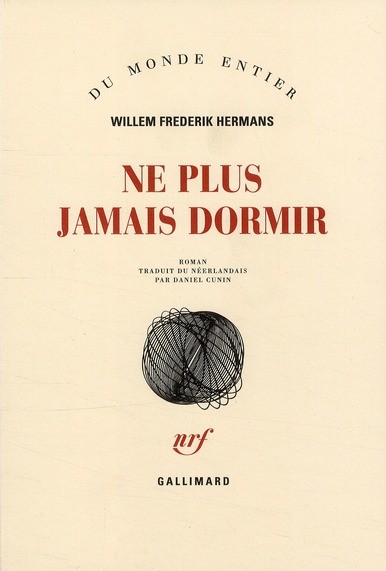DESHIMA n° 5
Regards sur l’histoire africaine des pays nord-européens
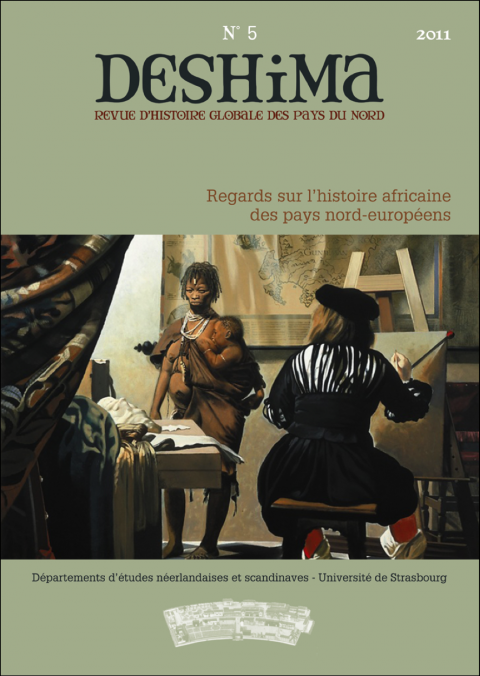
Le dernier numéro de Deshima propose un dossier plein de surprises sur les liens entre Afrique et pays de l’Europe septentrionale. Côté littérature, la nouvelle Petit cheval du Néerlandais Tomas Lieske nous emmène à travers mythes et phobies dans une Égypte ancienne peuplée de centaures. Dans Adelheid, le jeune prosateur norvégien Gaute Heivoll étale sa virtuosité (restituée grâce à un collectif de traducteurs). Norvège à l’honneur aussi avec Torild Wardenœr dont Anne-Marie Soulier a traduit quatorze poèmes empruntés à divers recueils. Suivent sept poèmes du Flamand Peter Holvoet-Hanssen et six du Néerlandais Jaap Robben (illustrés par Benjamin Leroy et tirés du recueil pour enfants Zullen we een bos beginnen ?).
Sommaire
AFRIQUE
Thomas Mohnike
Itinéraires imbriqués : Éléments d’une histoire africaine des pays nord-européens
Frederike Felcht
On the topography of H.C. Andersen’s travelogue I Spanien (traduit de l’allemand par Ingo Maerker et Michelle Miles)
Joachim Schiedermair
Turmoil in the Dark Continent. Gender, Mimicry, and Colonial Resistance in Verner von Heidenstam and Peter Høeg (traduit de l’allemand par Ingo Maerker et Michelle Miles)
Christine Smith-Simonsen
Mythbusting. Looking for Norwegians in the colonies
Le « negerhollands » de Saint-Thomas et de Saint-Jean (présenté Thomas Beaufils, traduit du néerlandais et annoté par Pierre Meersschaert avec la collaboration de Thomas Beaufils)
Claudia Huisman
Soldats africains dans les Indes orientales néerlandaises. Belanda Hitam
Vermeer en Afrique. L’allégorie de l’histoire de Helmut Starcke
Catherine Repussard
JunkerInnen en Afrique. Les « fermes africaines » de Frieda von Bülow et Karen/Tania Blixen
Frederike Felcht
Les politiques de la faim dans Sult (La Faim) et Life & Times of Michael K
Explorations dans l’imaginaire (sur l’œuvre de Tomas Lieske)
Petit cheval (nouvelle traduite du néerlandais par Daniel Cunin)
SAVANTS MÉLANGES
Annie Bourguignon
Peut-on lire Nordahl Grieg au XXIe siècle ?
Karin Ridell
Identités et appartenances linguistiques, nationales et régionales. Conversations dano-suédoises dans la région d’Öresund
Martin Kylhammar
Rompez ! Rompez ! L’art moderne de faire table rase du passé (traduit du suédois par Sylvain Briens et Max Stadler)
Alexis Metzger & Martine Tabeaud
Neiges et glaces dans les peintures hollandaises du Siècle d’or
Odile Parsis-Barubé
Les commencements de l’étrangeté. Nord et Midi dans l’imaginaire romantique français de la limite
ARTS ET LETTRES DES PAYS DU NORD
Annick Drösdal-Levillain
Gaute Heivoll
Gaute Heivoll
Adelheid (nouvelle)
Anne-Marie Soulier
Torild Wardenær
Torild Wardenær
Poèmes (traduits du suédois par Anne-Marie Soulier)
Poèmes (traduits du néerlandais par Daniel Cunin)
Six poèmes (illustrés par Benjamin Leroy, traduits du néerlandais par Daniel Cunin)

ABSTRACTS
Frederike Felcht
On the Topography of H. C. Andersen’s travelogue I Spanien
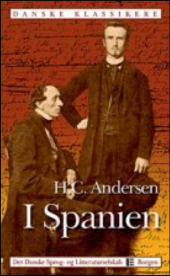 The article explores how space is represented in Hans Christian Andersen’s I Spanien (1863). The travelog begins at the French border and continues through Spain via Gibraltar, down to Morocco, and from there back to Spain via another route. It is characterized by precise observations, numerous poems, and passages of lyrical prose. The descriptions of architecture and infrastructures, landscapes and cities are enriched with inter-textual references, historical background information, and the emotions of the first-person narrator. This creates a complex image of the spaces described, which is analyzed with the help of David Harvey’s Marxist cultural geography and Edward Said’s postcolonial theory. The emphasis of this inquiry is on the relationship between Denmark, Spain, and Africa in the topography of I Spanien. The article demonstrates how I Spanien establishes a hybrid geography of mutual relations and thus opens a space for a different understanding of the relationship between Europe and Africa than was common in the nineteenth century.
The article explores how space is represented in Hans Christian Andersen’s I Spanien (1863). The travelog begins at the French border and continues through Spain via Gibraltar, down to Morocco, and from there back to Spain via another route. It is characterized by precise observations, numerous poems, and passages of lyrical prose. The descriptions of architecture and infrastructures, landscapes and cities are enriched with inter-textual references, historical background information, and the emotions of the first-person narrator. This creates a complex image of the spaces described, which is analyzed with the help of David Harvey’s Marxist cultural geography and Edward Said’s postcolonial theory. The emphasis of this inquiry is on the relationship between Denmark, Spain, and Africa in the topography of I Spanien. The article demonstrates how I Spanien establishes a hybrid geography of mutual relations and thus opens a space for a different understanding of the relationship between Europe and Africa than was common in the nineteenth century.
Joachim Schiedermair
Turmoil in the Dark Continent. Gender, Mimicry, and Colonial Resistance in Verner von Heidenstam and Peter Høeg
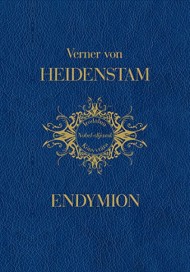 In postcolonial studies, the subversion of binary ways of thinking is regarded as a useful device for resistance. One of the strategies used for overcoming binaries is “mimicry”, which means that the colonized imitate their colonizers in order to communicate on the same level. At the same time, imitation can never be just a copy; it will always change the original. This hypothesis is examined using two literary texts from Scandinavia: Peter Høeg’s Rejse ind i et mørkt hjerte (1990) and Verner von Heidenstam’s Endymion (1889). Both texts connect the colonial situation with the subversion of gender differences. Høeg meets our expectations, since in his text the breakdown of the gender paradigm causes the deconstruction of the domination of colonial power, whereas the analysis leads us to the surprising result in Heidenstam’s text that the subversion of gender differences stabilizes the colonial difference.
In postcolonial studies, the subversion of binary ways of thinking is regarded as a useful device for resistance. One of the strategies used for overcoming binaries is “mimicry”, which means that the colonized imitate their colonizers in order to communicate on the same level. At the same time, imitation can never be just a copy; it will always change the original. This hypothesis is examined using two literary texts from Scandinavia: Peter Høeg’s Rejse ind i et mørkt hjerte (1990) and Verner von Heidenstam’s Endymion (1889). Both texts connect the colonial situation with the subversion of gender differences. Høeg meets our expectations, since in his text the breakdown of the gender paradigm causes the deconstruction of the domination of colonial power, whereas the analysis leads us to the surprising result in Heidenstam’s text that the subversion of gender differences stabilizes the colonial difference.
Christine Smith-Simonsen
Mythbusting: Looking for Norwegians in the Colonies
During the past ten years, a line of research has been published that puts the Norwegian self-image of imperial innocence under scrutiny. The myth that Norway never partook in any colonial adventures has been challenged by a series of studies showing how a number of Norwegians followed in the wake of colonialism, taking the opportunities at hand to establish trade and other enterprises, buy land, settle permanently, enlist in colonial services, and even run commercial estates of notable sizes.
J.P.B. de Josselin de Jong
Negro-Dutch in St. Thomas and St. Jean
This article by J.P.B. de Josselin de Jong, translated from the Dutch original, retraces the question of the crossbreeding between African languages and Dutch in Negro-Dutch, which was spoken in the Danish Antilles until the beginning of the twentieth century. This Creole, essentially spoken by slaves, was influenced by the idioms of the former Dutch colonizers. In it, we can recognize traces of the language spoken by Zealand’s sailors, which dominated the triangle trading area and the sugar plantations in this region in the seventeenth century. In December 12, 1916, the Danish Antilles were sold to the United states of America who were interested in their strategic position near the Panama canal. Since then, they were named the Virgin Islands.
Claudia Huisman
Belanda Hitam: African Soldiers in the Dutch Indies
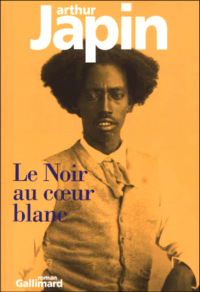 Starting in 1830, the Dutch were obliged to reinforce their troops in the East Indies (now Indonesia) to extend their colonial domination. Because of the shortage of European soldiers, the Dutch turned to the Gold Coast in West Africa. As of 1637, they were in possession of Elmina, the commercial port of the Ashanti kingdom, from which tens of thousands of slaves were shipped to Brazil, Curacao, Surinam and other places to work on plantations. But the Dutch had little success recruiting Ashanti volunteers. Only 3,000 men left for Java between 1831 and 1872. These Belanda Hitam (Black Dutch) participated in military campaigns in Borneo, Bali, and Sumatra. They were considered to be “insolent Negroes,” unable to adapt to colonial society. And yet they eventually became completely integrated, and most of them stayed in Java and started families. To counterbalance their story of becoming Black Dutch citizens in the East Indies, I evoke the extraordinary adventure of two Ashanti princes, Kwasi and Kwame, who were sent to Holland to obtain a Dutch education and become Black Dutch citizens by striking the opposite path in a story related by Arthur Japin in his beautiful novel The Two Hearts of Kwasi Boachi.
Starting in 1830, the Dutch were obliged to reinforce their troops in the East Indies (now Indonesia) to extend their colonial domination. Because of the shortage of European soldiers, the Dutch turned to the Gold Coast in West Africa. As of 1637, they were in possession of Elmina, the commercial port of the Ashanti kingdom, from which tens of thousands of slaves were shipped to Brazil, Curacao, Surinam and other places to work on plantations. But the Dutch had little success recruiting Ashanti volunteers. Only 3,000 men left for Java between 1831 and 1872. These Belanda Hitam (Black Dutch) participated in military campaigns in Borneo, Bali, and Sumatra. They were considered to be “insolent Negroes,” unable to adapt to colonial society. And yet they eventually became completely integrated, and most of them stayed in Java and started families. To counterbalance their story of becoming Black Dutch citizens in the East Indies, I evoke the extraordinary adventure of two Ashanti princes, Kwasi and Kwame, who were sent to Holland to obtain a Dutch education and become Black Dutch citizens by striking the opposite path in a story related by Arthur Japin in his beautiful novel The Two Hearts of Kwasi Boachi.
Wouter van der Veen
Vermeer in Africa: The Muse of History of Helmut Starcke
When the Dutch VOC settled in what was to become the Republic of South Africa in the middle of the seventeenth century, the San and Khoi populations they encountered did not realize that the end of their culture and way of life was in sight. The Dutch brought weapons, technology, and illnesses that would change the south coast of Africa forever. What they did not bring, surprisingly, was their art. It seems that seventeenth-century Dutch paintings were of no use overseas. German-born artist Helmut Starcke painted a true masterpiece by portraying his own interpretation of a world-famous work by Johannes Vermeer, The Art of Painting. This essay reflects on the questions raised by Helmut Starcke’s painting from a truly “art-historical” perspective, for Starcke gave his intriguing work the title The Muse of History.
Catherine Repussard
Gentlewomen in Africa. The African Farms of Frieda von Bülow and Karen (Tania) Blixen
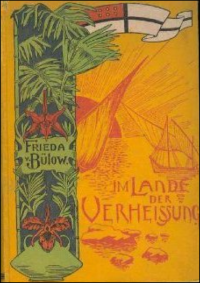 Although Frieda von Bülow and Karen Blixen lived in different times, they shared a strange community of fate. Both of them staged their lives in East Africa in novels: Bülow in Im Lande der Verheißung (1899) and Blixen in Out of Africa / Den afrikanske Farm (1937). The two writers share a colonial attitude and treat Africa in similar ways. They confess their adoration for African nature and succumb to the spell of exoticism when encountering a continent of charming beauty, all the while reaffirming their attachment to their worlds of origin by relying on the image of an immense African farm overseen by a woman with a firm hand. In the two novels, a white, European aristocratic woman is depicted as exercising authority over the indigenous population, thus enacting a kind of “feudal colonial feminism” as a condition for her own liberty and liberation. The African farm thus becomes a symbol of a utopian social project that opens up a field of unlimited possibilities, combinations, hybridizations, and reconstructions, erasing borders of time and space as well as those of identity.
Although Frieda von Bülow and Karen Blixen lived in different times, they shared a strange community of fate. Both of them staged their lives in East Africa in novels: Bülow in Im Lande der Verheißung (1899) and Blixen in Out of Africa / Den afrikanske Farm (1937). The two writers share a colonial attitude and treat Africa in similar ways. They confess their adoration for African nature and succumb to the spell of exoticism when encountering a continent of charming beauty, all the while reaffirming their attachment to their worlds of origin by relying on the image of an immense African farm overseen by a woman with a firm hand. In the two novels, a white, European aristocratic woman is depicted as exercising authority over the indigenous population, thus enacting a kind of “feudal colonial feminism” as a condition for her own liberty and liberation. The African farm thus becomes a symbol of a utopian social project that opens up a field of unlimited possibilities, combinations, hybridizations, and reconstructions, erasing borders of time and space as well as those of identity.
Frederike Felcht
The Motif of Hunger in Sult and Life & Times of Michael K
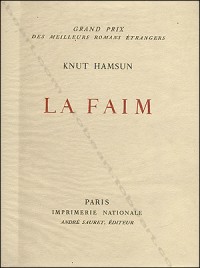 This essay demonstrates the analytical potential of the motif of hunger in Knut Hamsun’s Sult (Hunger) (1890) and J. M. Coetzee’s Life & Times of Michael K (1983). Sult was published in Norway at the end the nineteenth century and Life & Times of Michael K in South Africa almost one hundred years later. In spite of these different historical and geographical backgrounds, the motif of hunger in both texts reveals similar questions. They explore strategies working against the modern disciplining of the body. This article presents a short history of hunger and analyzes the motif of hunger in the texts from a comparative perspective. It focuses on the semantics of the descriptions of hunger, on the perception of time, and on forms of control that are contrasted with the protagonists’ behaviour, revealing a close relation between hunger and the modern bio-political practices reflected in the texts.
This essay demonstrates the analytical potential of the motif of hunger in Knut Hamsun’s Sult (Hunger) (1890) and J. M. Coetzee’s Life & Times of Michael K (1983). Sult was published in Norway at the end the nineteenth century and Life & Times of Michael K in South Africa almost one hundred years later. In spite of these different historical and geographical backgrounds, the motif of hunger in both texts reveals similar questions. They explore strategies working against the modern disciplining of the body. This article presents a short history of hunger and analyzes the motif of hunger in the texts from a comparative perspective. It focuses on the semantics of the descriptions of hunger, on the perception of time, and on forms of control that are contrasted with the protagonists’ behaviour, revealing a close relation between hunger and the modern bio-political practices reflected in the texts.
Annie Bourgignon
Can We Read Nordahl Grieg in the 21st-century?
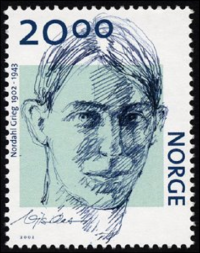 Nordahl Grieg (1902-1943) was a Norwegian traveller, journalist, poet, and a writer. In the 1930s, he became a communist and supported the USSR unconditionally. In interviews and features in the press, he approved of the Moscow trials (staged by Stalin against former Bolsheviks) and later the German-Soviet pact. But when the German army attacked his own country in April 1940, he immediately volunteered to defend it and became an ardent Norwegian patriot. In the novel Ung må verden ennu være (1938) (The World Must Still Be Young), Grieg describes the USSR, the trials, and the Spanish Civil War. He later stated that the novel was intended to justify soviet policy, including its more questionable sides. But when reading this work today, it appears rather to depict a dismal picture of soviet society. This article is an attempt to read Ung må verden ennu være from this perspective of what we know about its author. Grieg’s novel thus appears as a broad description of Europe in the 1930s, where the storm of major catastrophes is brewing.
Nordahl Grieg (1902-1943) was a Norwegian traveller, journalist, poet, and a writer. In the 1930s, he became a communist and supported the USSR unconditionally. In interviews and features in the press, he approved of the Moscow trials (staged by Stalin against former Bolsheviks) and later the German-Soviet pact. But when the German army attacked his own country in April 1940, he immediately volunteered to defend it and became an ardent Norwegian patriot. In the novel Ung må verden ennu være (1938) (The World Must Still Be Young), Grieg describes the USSR, the trials, and the Spanish Civil War. He later stated that the novel was intended to justify soviet policy, including its more questionable sides. But when reading this work today, it appears rather to depict a dismal picture of soviet society. This article is an attempt to read Ung må verden ennu være from this perspective of what we know about its author. Grieg’s novel thus appears as a broad description of Europe in the 1930s, where the storm of major catastrophes is brewing.
Karin Ridell
Linguistic, National, and Regional Identities and Membership Categorizations. Danish-Swedish Conversations in the Öresund Region
In this article, excerpts from talk-in-interaction between Danes and Swedes in the work place (a care home for the elderly) in the Öresund region (the cross-border region between Denmark and Sweden) are analyzed by focusing on how the participants express and negotiate their linguistic, regional, and national membership categorizations and identity. Conversation analysis and membership categorization analysis form the theoretical and methodological framework of this study. The analyses demonstrate that linguistic, national, and regional membership categorizations are made relevant in different sequential positions in different ways. It is argued that such categorization can result in attenuating a delicate situation or in keeping the channels of conversation open. Like all membership categorizations of a person in talk-in-interaction, linguistic, national, and regional membership categorizations have proven to be a powerful tool for performing interactional actions, such as refusing a request or creating social affiliation between different participants. It is also demonstrated that repair (self- or other-initiated), essentially of a linguistic trouble source, is just one of several sequence types in which linguistic membership categorization often occurs.
Martin Kylhammar
The Modern Art of Burying the Past
This essay deals with the project of modernity – what it consists of, and the value placed on its results. Modernity is the dream of a good society. It would not be altogether wrong to call this project a dream, since dreams are always on the verge of becoming nightmares. The men involved in this project have always looked forward. This, I argue, is for a good reason, and the results have been spectacular. However, it also implies that modernity has a special relationship to the past, and that we have searched, more or less successfully, for methods with which to assess the efforts of the past before disposing of them.
Alexis Metzger, Martine Tabeaud
Snow and Ice in Dutch Paintings in the Golden Age
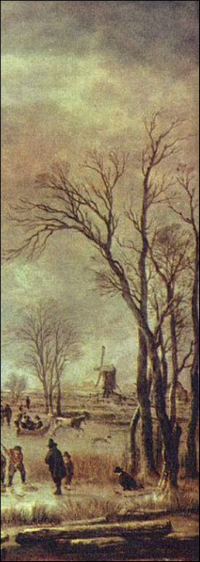 In the Dutch Golden Age, the production of winter scenes in paintings reached a climax. In focusing on these representations of winter and coldness, one might wonder whether the paintings correlated with the actual weather. If so, do the paintings genuinely show the weather at the time they were painted? In this article, I discuss that, because the winter scenes became exceedingly appreciated by a buying public, painters began to produce these paintings without taking the actual weather into account. Eventually, they painted winter scènes de genre and developed a typology of images for these winter scenes. The unusual, rough coldness of the Little Ice Age winters actually taking place outside generally disappeared from the paintings, and joyful winter scenes were preferred.
In the Dutch Golden Age, the production of winter scenes in paintings reached a climax. In focusing on these representations of winter and coldness, one might wonder whether the paintings correlated with the actual weather. If so, do the paintings genuinely show the weather at the time they were painted? In this article, I discuss that, because the winter scenes became exceedingly appreciated by a buying public, painters began to produce these paintings without taking the actual weather into account. Eventually, they painted winter scènes de genre and developed a typology of images for these winter scenes. The unusual, rough coldness of the Little Ice Age winters actually taking place outside generally disappeared from the paintings, and joyful winter scenes were preferred.
Odile Parsis-Barubé
The Beginnings of Strangeness: The North and the Midi in the French Imaginary of limits
This article is a study of how travel narratives in France in the first half of the nineteenth century contributed to producing the impression of strangeness and otherness to which the North and the Midi were connected in a nationalized space. Construed as an expression of a system of oppositions, they relate to a complex process of cultural references, sensitive perceptions, and anthropological presuppositions. By exploring these interactions, this article contributes to the study of localized conceptions of romantic notions.



